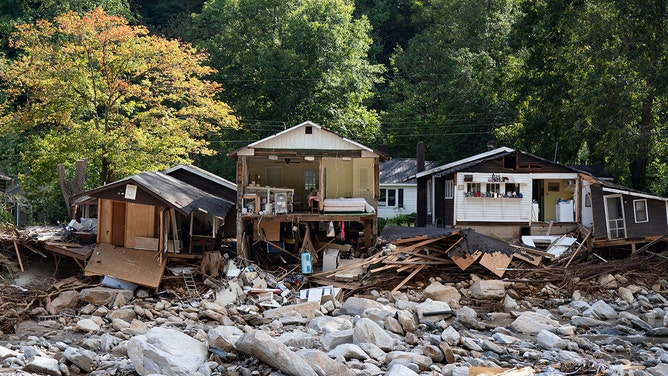North Carolina gears up for bee stings in the wake of Hurricane Helene
The North Carolina Wildlife Federation says there are more than 500 native bee species. The state’s climate makes it an ideal location for honey production and beekeeping.
Help is arriving to victims from Hurricane Helene
Relief groups and restoration companies have arrived in North Carolina to help the thousands of homeowners who were impacted by flooding and damaging winds during Helene.
ASHEVILLE, N.C. – In the wake of Hurricane Helene, North Carolina is preparing for an increase in bee stings, with thousands of EpiPens and other medications being distributed around the Tar Heel State.
The states of Florida, Georgia, South Carolina, North Carolina and Tennessee were the hardest hit when Helene moved through the region more than a week ago, producing feet of rainfall and damaging winds.
The Category 4 cyclone uprooted trees and reshaped the landscape, affecting not only humans but also wildlife populations and insects.
North Carolina is home to a significant bee population, which is why health departments are warning about the potential for encounters, especially during the recovery phase.
The North Carolina Wildlife Federation says there are more than 500 bee species, with a large number used for honey production.
Unfortunately, nests and beehives may have been disturbed during the hurricane, leading to the insects becoming potentially more defensive.
MILLIONS OF BEES DIE FROM HEAT ON TARMAC AT ATLANTA’S AIRPORT
According to medical professionals, at least 2 million Americans are allergic to bee stings.
In the most severe cases, a sting can trigger what is known as anaphylactic shock, requiring a dose of epinephrine and medical care.
Direct Relief, a humanitarian aid organization, says it has helped supply care centers in North Carolina with more than 2,000 EpiPen shots to help cope with the potential for bee stings.
Beekeepers warn that the insects are naturally more defensive during the fall as they protect their hives before hibernation during the winter.
According to medical experts at the Cleveland Clinic, there are steps you can take to reduce the risk of getting stung by a bee.
It is recommended to take measures such as removing food from the outdoors, wearing protective clothing and using unscented or non-floral products to lessen the attraction of the bees.
MONARCHS MAKE A COMEBACK IN CALIFORNIA
More than 200 people were killed across seven states, and dozens remain unaccounted for following the Helene disaster.
So far, authorities have not connected any of the fatalities to stings, of which the country usually sees around 100 per year.
According to emergency managers, drownings and falling trees make up the majority of the storm’s fatalities.





